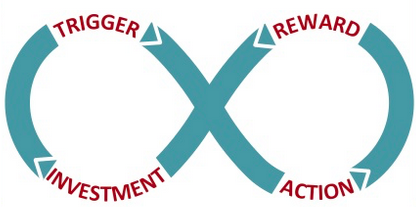
#2 of 5: Grace Barrett – Breaking the Hook Model of Social Media
Grace Barrett of the Self Esteem Team talks about the addictive power of social media. Young people are conditioned to receive dopamine hits which can make them more susceptible to addiction. Social media is designed to tap into young people’s dopamine driven desire for social validation. Grace explained how social media works in the form of the hook model (see below).
A trigger could be a notification which leads to scrolling through news feeds, then the user is rewarded through feeling connected with friends and family. Notifications then act as external triggers to drive the user back to the service.

Despite social media being highly addictive, there are many ways in which you can encourage young people to break the hook model, including:
- E-safety lessons – educate parents and children on dangers
- Encourage learners not to check notifications straight away – creates discipline
- Talk about what they might find and how it might make them feel
- Pause the action – don’t respond to comments straight away
- Create a culture of acceptance – encouraging use in the classroom, for example doing online quizzes in lessons
- Turn off notifications – a relief to young people, who are increasingly becoming overwhelmed and constantly surrounded by notifications and digital noise. Research has found that 58% of 18-14 year olds believe technology is destroying the art of conversation (Source: Nominet)
- Develop creativity – showing other places with less risk where they can get their dopamine hit
- Encourage learners to find hobbies and other passions outside of the digital environment
Watch Grace’s full keynote at the Ascentis National Conference Read #3 of 5: Gyles Brandreth – 7 Secrets of Happiness
















